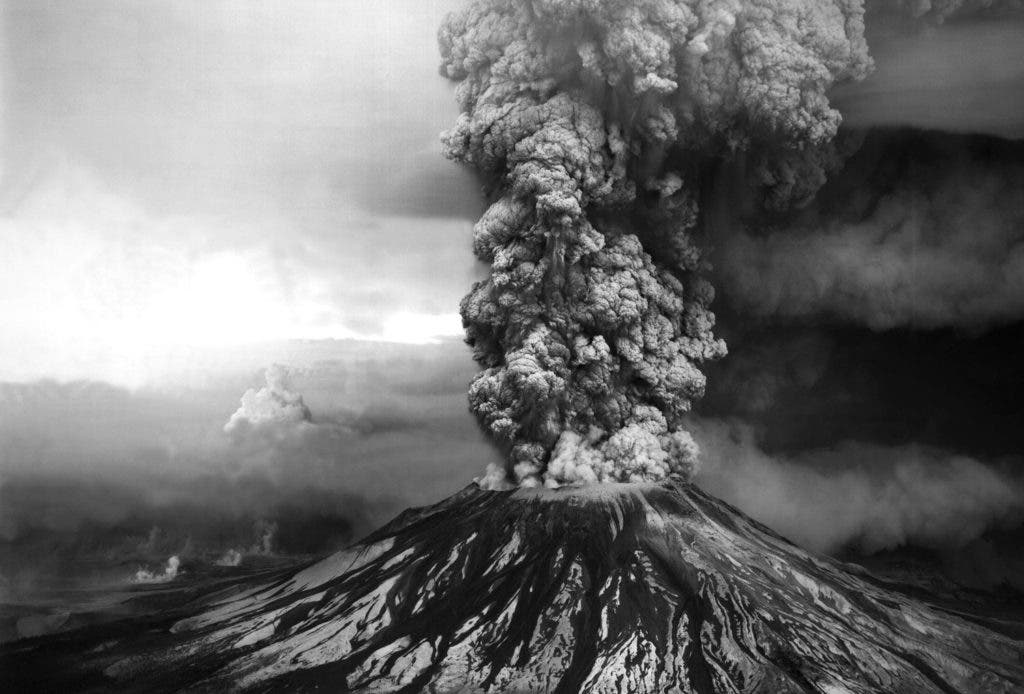
At 8:32 AM, on May 18, 1980, Mount St. Helens erupted for the first time in 100 years, causing the largest debris avalanche on Earth in recorded history as the volcano’s northern bulge and summit slid away. Besides the 2.5 km3 avalanche which was triggered by a magnitude 5.1 earthquake, St. Helens also spewed 250 million tons of ash and killed 58 people who were living in the Washington state. But despite all of this destructive power, St. Helens is actually cold on the inside, a newly published paper reports.
St. Helens is one of the most active volcanoes within the Cascade arc, a North-South chain of volcanoes in the Pacific Northwest. It’s one of the most common types of volcanoes — a composite volcano or stratovolcano, consisting of layers of solid lava flows mixed with layers of other rock with steep slopes.
Geologists have had a lot to learn since St. Helens violently erupted 35 years ago. For instance, geophysical surveys suggest that the eruptive products came from one or more upper-crustal magma chambers found 3 to 12 kilometers deep below the surface. However, the exact structure and nature of this magmatic plumbing system have always been a mystery.
Since 2014, researchers at University of New Mexico have painstakingly surveyed St. Helens magmatic system. Steven Hansen was among the team which comprised scientists from various institutions from the United States and elsewhere. He and colleagues hiked for 20 miles a day carrying several dozen pounds of seismic sensors at a time. Some 900 autonomous seismographs were deployed in a 15 km radius around Mount St. Helens’ summit.
The researchers detonated explosive charges that produced mini-earthquakes whose ripples were then picked by the sensing instruments to make a high-resolution seismic image of the deep crustal structure beneath this active arc volcano.
“All sensors were deployed along the road and trail system at Mount St. Helens with an average spacing of 250 meters,” said Hansen. “After deploying the seismographs, 23 active source explosions were conducted by the Rice group, headed by Alan Levander and Eric Kiser.”
The resulting dataset showed there’s a sharp boundary between the strong and weak reflectivity of the seismic waves right beneath Mount St. Helens. This sharp boundary basically tells us what the temperature of the mantle is.
According to the data, Mount St. Helens sits on a cold mantle wedge by volcanic standards, being under 700 degrees Celsius in temperature.
“It is important to note that we have just finished collecting all of the different types of geophysical data associated with the iMUSH experiment and that these data will provide important additional constraints on the deep structure at Mount St. Helens,” said Hansen.
That’s not the end of it, though. The eastern and western sides of the mountain contain different types of minerals at the boundary between the Earth’s crust and the mantle. This means Mount St. Helens might be a unique geological feature.
“Mount St. Helens therefore presents a thermal paradox because it lies directly adjacent to the cold mantle wedge and yet still produces arc derived magmatism which requires elevated temperatures,” wrote the researchers in their study.






